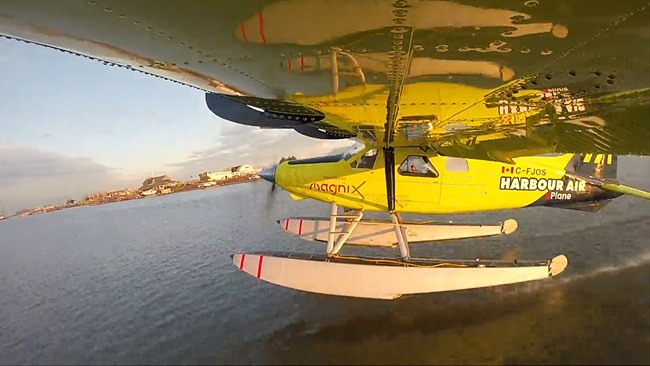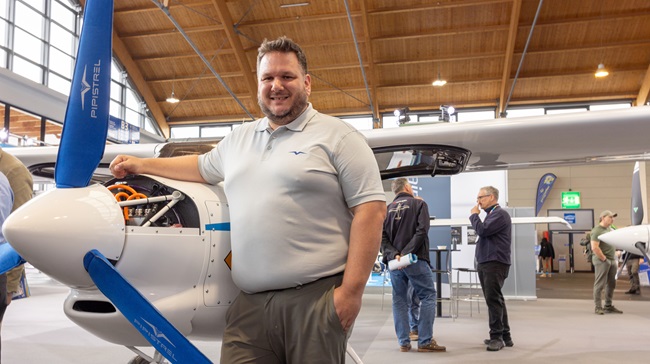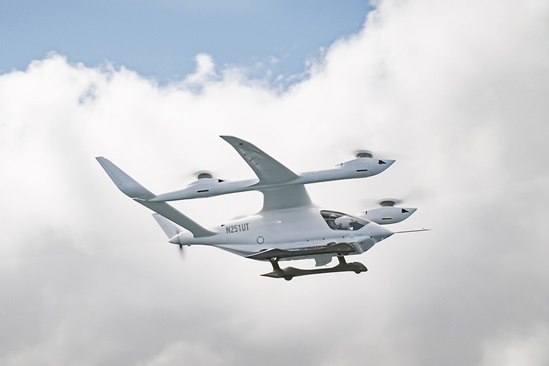Aero roundup
Aero Friedrichshafen, Germany’s general aviation convention, was the venue for a couple of interesting new developments possibly impacting the U.S. market, the most prominent among them announced by Tecnam Aircraft, Diamond Aircraft, and Elixir Aircraft.
Improvements to Tecnam's P2006T NG include an additional front door for the copilot. Photo courtesy of Tecnam.
- Tecnam introduced an upgraded version of its P2006T, the Tecnam P2006T NG (next generation). According to a press release, the Italian manufacturer added an additional front door, external access to the baggage compartment, larger windows, and an updated interior. The powerplant is “provided by twin fuel injected Rotax9121Sc3 engines” for high altitude efficiency and reduced fuel consumption. A super premium version with a leather interior is also available. Tecnam CEO Paolo Pascale Langer said, “Today, with the P2006T NG, Tecnam confirms its position as one of the most innovative aircraft manufacturers in the world.”
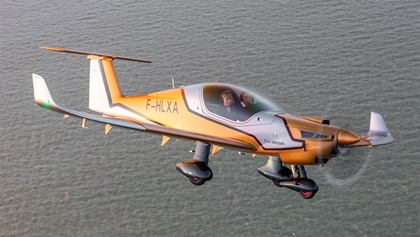 French aircraft manufacturer Elixir announced new production facilities in both France and the United States “to speed up production of aircraft on order,” according to a press release. The French site, the manufacturer’s third in France, will produce composite production parts (fuselage and flight controls) in Aytré, close to the company’s headquarters at La Rochelle. In addition, a reassembly plant will be located at Sarasota/Bradenton International Airport in Florida, intended for aircraft delivered to U.S. customers. The press release states, “The demand for Elixir aircraft in the American market is substantial, with over 200 units already pre-ordered.” Projected prices ranged from $300,000 for the entry model powered by a Rotax 912iS engine to $400,000 for the more advanced version in 2023.
French aircraft manufacturer Elixir announced new production facilities in both France and the United States “to speed up production of aircraft on order,” according to a press release. The French site, the manufacturer’s third in France, will produce composite production parts (fuselage and flight controls) in Aytré, close to the company’s headquarters at La Rochelle. In addition, a reassembly plant will be located at Sarasota/Bradenton International Airport in Florida, intended for aircraft delivered to U.S. customers. The press release states, “The demand for Elixir aircraft in the American market is substantial, with over 200 units already pre-ordered.” Projected prices ranged from $300,000 for the entry model powered by a Rotax 912iS engine to $400,000 for the more advanced version in 2023.-
Austria-based Diamond announced its intent to produce its eDA40 for flight training. The aircraft is all-electric and based on the DA40. The company, under a strategic cooperation agreement, joined forces with Lufthansa Aviation Training and tested the eDA40 in real training conditions at Dübendorf Air Base in Switzerland. According to a press release, “Five flights were carried out involving four LAT pilots, working closely together with the Diamond Aircraft Austria team consisting of engineers and flight test pilots on-site.” LAT’s pilots noted high user satisfaction and excellent performance, and remarked on how similarly the aircraft handles to the DA40 NG. “The European Flight Academy, the flight school of Lufthansa Group, is not only dedicated to [the] highest training standards but also commits itself to new approaches to foster sustainability in aviation. We are delighted to be part of the eDA40 development process. It gives us a deep understanding of the new technology used and enables us to use it for the most advanced training,” said Matthias Spohr, CEO of Lufthansa Aviation Training. The eDA40 would be “the first certified electric airplane in its category and the greenest way to learn to fly.” According to Diamond’s website, the electric aircraft is powered by an "ENGINeUS" electric smart motor supplied by Safran Electrical & Power, drawing power from an Electric Power Systems battery module equipped with a direct current fast charging system.
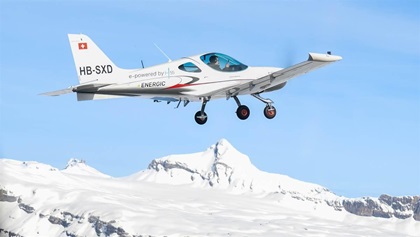 BRM Aero, the Czech Republic-based aircraft manufacturer known for Bristell aircraft, and Switzerland’s H55, the technological spinoff of Solar Impulse, announced the B23 Energic. The two-seater is a fully electric aircraft “offering unparalleled performance, efficiency, and environmental sustainability […] with a maximum take-off weight of 850 kg [1873.93 pounds], 60 minutes of endurance, plus reserves, and an hour charge time,” according to a joint press release. André Borschberg, executive chairman of H55, said, “We are thrilled to bring the B23 Energic aircraft to the market as the first CS-23 certified electric airplane.” The H55‘s propulsion and battery technology has received acceptance for the European Union Aviation Safety Agency’s Compliance Checklist, a significant step toward certification of the entire electric propulsion system. In an email a spokesperson said, “We are certifying first with EASA and we are already in discussion with the FAA and Transport Canada.”
BRM Aero, the Czech Republic-based aircraft manufacturer known for Bristell aircraft, and Switzerland’s H55, the technological spinoff of Solar Impulse, announced the B23 Energic. The two-seater is a fully electric aircraft “offering unparalleled performance, efficiency, and environmental sustainability […] with a maximum take-off weight of 850 kg [1873.93 pounds], 60 minutes of endurance, plus reserves, and an hour charge time,” according to a joint press release. André Borschberg, executive chairman of H55, said, “We are thrilled to bring the B23 Energic aircraft to the market as the first CS-23 certified electric airplane.” The H55‘s propulsion and battery technology has received acceptance for the European Union Aviation Safety Agency’s Compliance Checklist, a significant step toward certification of the entire electric propulsion system. In an email a spokesperson said, “We are certifying first with EASA and we are already in discussion with the FAA and Transport Canada.”- Garmin announced the expansion of its Garmin Navigation Database to include Europe. According to a press release, “Coverage is available in over 35 countries and more than 3,400 airports.” Single device bundles and OnePak annual subscriptions are offered, as well as a new Europe OnePak subscription for pilots flying aircraft equipped with a Garmin integrated flight deck or multiple Garmin avionics systems. The database is also available for purchase to U.S. customers, according to an email from a Garmin spokesperson to AOPA.
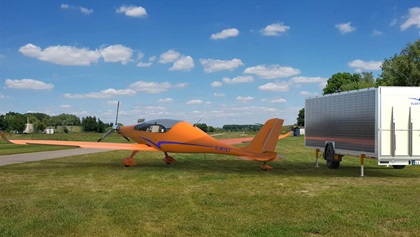 Germany-based Elektra Solar presented its updated Elektra Trainer electric aircraft, recipient of the Innovation Award at Aero 2023 and certified as an ultralight. Charging modes include a type 2 AC charging station (the European, universal socket for charging electric cars), and a solar trailer. This year’s model has long winglets for better aerodynamics, an integrated charger, thrust reversers, and a new instrument panel.
Germany-based Elektra Solar presented its updated Elektra Trainer electric aircraft, recipient of the Innovation Award at Aero 2023 and certified as an ultralight. Charging modes include a type 2 AC charging station (the European, universal socket for charging electric cars), and a solar trailer. This year’s model has long winglets for better aerodynamics, an integrated charger, thrust reversers, and a new instrument panel.- On April 18, Continental Aerospace Technologies introduced its newest Jet A piston engine variant, the CD-170R, a model specifically for rotorcraft applications. Combined with full authority digital engine control, this 170-horsepower, turbocharged engine offers lower fuel consumption and dual redundancy. It’s expected to burn approximately 7.9 gallons of Jet A-1 per hour in cruise, according to the company’s press release. “Transforming the pilot experience, the DC-170R was engineered with the pilot’s needs at the forefront. Controlled via FADEC with rotorcraft-specific software mapping, pilots can now direct their focus toward the critical phases of flight and mission, alleviating the need to manage both the throttle and the collective simultaneously,” David Dörner, vice president of global research and development, said. EASA certification is expected later this year.
This year marks the thirtieth anniversary of Aero Friedrichshafen, and more than 650 exhibitors from 35 countries are celebrating by displaying their products, ranging from gliders to long-range business jets.
Sylvia Schneider Horne
Digital Media Editor
Sylvia Schneider Horne is a digital media editor for AOPA's eMedia division.

